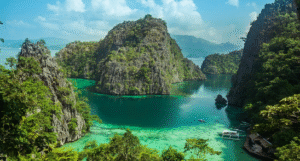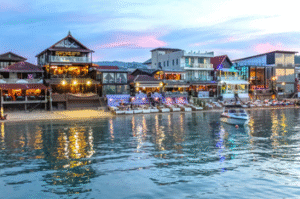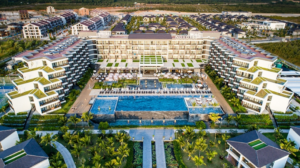Imagine living at an altitude so high that every breath feels like an achievement. Welcome to La Rinconada, the highest permanent settlement on Earth. Nestled in the Peruvian Andes at 5,100 meters (16,732 feet) above sea level, La Rinconada is a place where life defies the odds, and people seek fortunes buried beneath the rugged landscape.
If you’re looking for an adventure that will take you to the extremes of human endurance, La Rinconada is the place. This blog will dive deep into the life, struggles, and unique dynamics of this extraordinary settlement, blending rich cultural insights with data-driven facts. Let’s explore why La Rinconada stands as a symbol of hope, resilience, and a tough life, wrapped in a cloak of golden dreams.
Problem The Harsh Realities of Life in La Rinconada
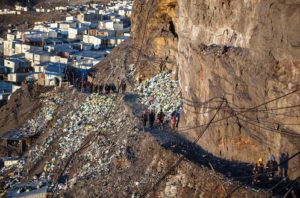
At first glance, La Rinconada may seem like an adventurer’s paradise. But for the 50,000 or so locals, the reality is brutal. They live in precarious conditions, drawn by the promise of gold mining, a major source of income in the area. Yet, this allure comes at a high cost.
1. Extreme Weather Conditions
- Temperatures here regularly drop below freezing. The air is thin, making it difficult for newcomers to acclimatise. Many suffer from altitude sickness, experiencing symptoms like headaches, nausea, and dizziness.
- The oxygen level is about 40% lower than at sea level, pushing the human body to its limits every single day.
2. Lack of Basic Amenities
- There is no running water in La Rinconada. Residents rely on glacier melt for their daily water needs, which is often contaminated by mining activities.
- The settlement lacks proper sanitation systems, and waste management is almost non-existent. Streets are littered with trash and human waste, posing severe health risks.
3. Gold Rush and Exploitation
- The economy is driven by gold mining, but it’s a double-edged sword. While some strike it rich, many miners work under a system called “cachorreo,” where they work without pay for 30 days. On the 31st day, they are allowed to take home whatever gold they can find—a risky gamble that rarely pays off.
- There is minimal regulation in the mining industry here, leading to unsafe working conditions. The use of mercury in gold extraction has poisoned local water sources, affecting both the environment and the health of the residents.
Solution: Why People Stay Despite the Challenges

Given the harsh conditions, you might wonder why people choose to stay in La Rinconada. The answer lies in the promise of gold. For many, it’s an opportunity to escape poverty, a gamble worth taking despite the odds. Let’s break down the reasons:
1. Economic Opportunity
- Many of La Rinconada’s miners reside in Peru’s poorest regions. The prospect of finding gold, however slim, is a chance at a better life.
- Even the smallest gold nuggets can be sold for a significant amount, making it a lucrative, albeit risky, venture.
2. Sense of Community
- Despite the tough conditions, there is a strong sense of camaraderie among the miners and their families. They share the hardships and support each other, creating a unique bond that’s hard to find elsewhere.
- Local businesses, from food vendors to small shops, thrive on the bustling economy created by the influx of miners, giving families a way to earn a living outside the mines.
3. Adaptation to High Altitude
- Many locals have adjusted to the high elevation over time. Their bodies have increased red blood cell counts, allowing them to function better in low-oxygen environments.
- This adaptation, while impressive, comes with its own set of health risks, including chronic mountain sickness.
Agitation: The Environmental and Human Cost of Gold Mining in La Rinconada

While the search for gold drives the economy, it also brings severe consequences. The environmental impact of mining activities is evident everywhere in La Rinconada.
1. Mercury Pollution
- The method of extracting gold makes extensive use of lead. The substance is cheap and effective but highly toxic.
- According to studies, 70% of the mercury used in La Rinconada ends up in the environment, contaminating water sources and posing a threat to both humans and wildlife.
- Mercury exposure can lead to severe health problems, including neurological damage, respiratory issues, and birth defects.
2. Deforestation and Landscape Degradation
- To extract gold, miners often have to dig deep into the earth, causing significant deforestation and landscape changes.
- The once-pristine Andean landscape has been marred by illegal mining activities, creating vast, barren areas where nothing grows.
3. Health Issues Among Miners
- The miners in La Rinconada face a range of health problems, from silicosis (a lung disease caused by inhaling silica dust) to musculoskeletal disorders due to long hours of physically demanding work.
- The lack of healthcare facilities means that even minor injuries can become life-threatening.
- Many rely on traditional remedies or self-medication, which often leads to further complications.
Solution: What Is Being Done and What More Can Be Done?
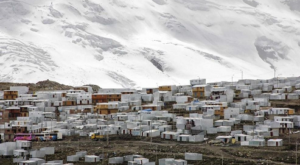
Despite the severe challenges, there have been efforts to improve the situation in La Rinconada. Let’s look at some ongoing initiatives and what more needs to be done.
1. Local and International NGO interventions
- Several NGOs are working in the region to provide clean water, health education, and medical assistance. Programs aimed at educating the miners about the dangers of mercury exposure have had some success, though much work remains.
- International bodies are pushing for more regulation in the mining industry, which could help improve working conditions and reduce environmental damage.
2. Technological Solutions for Safer Mining
- The introduction of mercury-free gold extraction technologies could drastically reduce pollution.
- However, these technologies are often expensive and difficult to implement in remote areas like La Rinconada.
- Investing in sustainable mining practices and providing miners with training on safer methods could help minimize the negative impact on both their health and the environment.
3. Community-Led Initiatives
- Empowering local communities to take charge of waste management and sanitation could make a significant difference.
- Projects that focus on recycling and reusing waste materials have been successful in similar high-altitude settlements.
- Promoting alternative sources of income, like tourism, could reduce the dependency on mining.
- La Rinconada’s unique location and cultural heritage could attract adventurous travellers looking for an off-the-beaten-path experience.
Action: Why You Should Care About La Rinconada

Beyond being the tallest village in the world, La Rinconada is more. It is a case study of human perseverance and the lengths people will go to in search of a better life. But it’s also a warning about the cost of unchecked resource exploitation and the fragile balance between economic development and environmental sustainability.
If you’re intrigued by La Rinconada, consider supporting organizations that work to improve conditions for its residents. Share this story with others, raising awareness about the issues faced by high-altitude communities. And if you’re an adventurer at heart, perhaps one day you’ll find yourself in La Rinconada, standing at the top of the world, witnessing firsthand the incredible resolve of the people who call it home.
Conclusion
La Rinconada is a place of extremes. It is a testament to human resilience, yet it is also a stark reminder of the consequences of our actions on the environment and vulnerable communities. The story of La Rinconada is still being written, shaped by those who choose to call it home, despite the challenges. It’s a powerful tale of survival, ambition, and hope, set against the breathtaking but unforgiving backdrop of the Andes.
Key Takeaways:
- La Rinconada is the highest permanent settlement in the world, located at an altitude of 5,100 meters.
- Life in La Rinconada revolves around gold mining, with many residents working under exploitative conditions.
- The settlement faces severe environmental and health challenges, primarily due to mercury pollution and lack of infrastructure.
- Efforts are being made to improve conditions, but more support and sustainable practices are urgently needed.
By understanding the unique dynamics of La Rinconada, we can better appreciate the incredible willpower of its people and the importance of sustainable solutions in similar high-risk areas worldwide.
If you enjoyed this deep dive into La Rinconada, don’t forget to share this post with your friends and followers. Let’s spread awareness and help build a brighter future for communities like La Rinconada.


